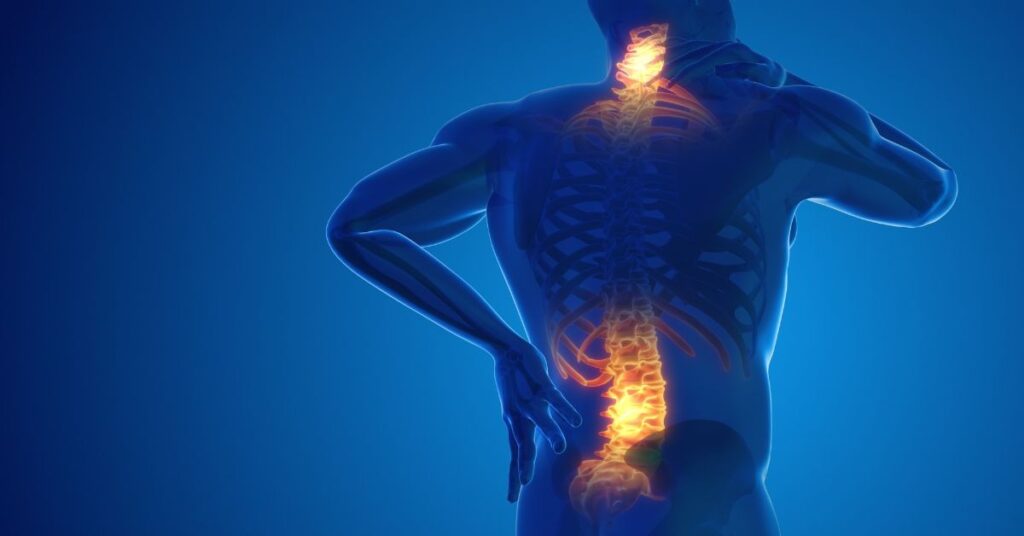Joint pain and inflammation are common complaints that affect millions of people worldwide. Among the myriad of conditions that cause these symptoms, andrigolitis stands out due to its specific characteristics and demographic trends. This blog post delves into the nature of andrigolit, exploring its definition, symptoms, causes, diagnosis, treatment options, risk factors, and the latest research in the field.
What is Andrigolitis?
Andrigolitis is an inflammatory joint disease that primarily affects men, though it can occur in individuals of any gender. The term itself derives from the Greek words “anēr,” meaning man, and “itis,” meaning inflammation. This condition is characterized by the inflammation of the joints, leading to pain, stiffness, and swelling. It shares similarities with other inflammatory conditions such as arthritis and tendinitis but has distinct features that set it apart.
The Mechanism of Inflammation
Before defining andrigolit it is important to know what happens in a joint that leads to inflammation. Part of the immune response is inflammation when the immune system realizes an injury or an infection has occurred. This process entails the presentation of a range of substances that cause vasodilation, attracting immune cells to the area of damages, thus causing r Redness, heat, swelling and is known as pain. What was normal in other cultural groups, in andrigolit, becomes amped up to create chronic symptoms that encroach on the ability to accomplish daily tasks.
Symptoms of Andrigolitis
Recognizing the symptoms of andrigolit is essential for early diagnosis and treatment. The condition often manifests with the following symptoms:
1. Persistent Joint Pain
The hallmark of andrigolitis is chronic joint pain. Patients often describe the pain as a dull ache that intensifies with movement and improves with rest. This pain can be localized to one joint or affect multiple joints simultaneously.
2. Swelling
Affected joints may become swollen, making them appear larger than usual. Swelling occurs due to increased blood flow and fluid accumulation in the joint space, which can limit mobility.
3. Stiffness
Many individuals with andrigolit experience joint stiffness, particularly after periods of inactivity. Morning stiffness is common, making it difficult to resume normal activities after waking up.
4. Redness and Warmth
The skin overlying the affected joint may appear red and feel warm to the touch. This is a sign of inflammation and increased blood flow to the area.
5. Fatigue
Chronic pain and inflammation can lead to fatigue, as the body expends energy fighting inflammation. Patients may find themselves feeling tired or lethargic even after a full night’s sleep.
6. Low-Grade Fever
In some cases, individuals may experience a mild fever alongside joint symptoms. This can indicate a more systemic inflammatory response.
Treatment for Andrigolitis
The management of andrigolitis is highly individualized, as each person’s experience may differ.
Psychotherapy
- Cognitive Behavioral Therapy (CBT): This therapeutic approach helps individuals identify and replace unhealthy thought patterns and behaviors.
- Supportive Therapy: Positive reinforcement and supportive interactions are vital in helping individuals process their emotions.
Medication
Pharmaceutical interventions may be appropriate for those experiencing significant symptoms. Antidepressants and anti-anxiety medications can be prescribed to alleviate emotional distress.
Lifestyle Changes
- Exercise: Engaging in regular physical activity has been shown to improve mood and reduce anxiety.
- Nutrition: A balanced diet rich in vitamins and nutrients can support overall mental health.
- Mindfulness Practices: Techniques such as yoga, meditation, and other stress-reduction strategies can promote emotional regulation.
Coping Strategies
Developing personal coping strategies is crucial for individuals dealing with andrigolitis. Effective methods may include:
Building a Support Network
Cultivating a supportive circle of friends, family, and professionals can foster feelings of acceptance and reduce isolation.
Journaling
Writing down thoughts and experiences can provide clarity and insights into personal feelings and challenges.
Setting Realistic Goals
Breaking tasks into manageable steps can enhance motivation and reduce feelings of hopelessness.
Diagnosis of Andrigolitis
Diagnosing andrigolitis requires a comprehensive approach, as its symptoms overlap with various other joint disorders. The following steps are typically involved in the diagnostic process:
1. Patient History
The healthcare provider will begin by taking a detailed patient history, including the onset of symptoms, their duration, and any potential triggers or exacerbating factors. A family history of joint diseases may also be relevant.
2. Physical Examination
A thorough physical examination is essential to assess the affected joints. The physician will check for swelling, tenderness, range of motion, and signs of inflammation.
3. Imaging Tests
Imaging studies such as X-rays or magnetic resonance imaging (MRI) may be ordered to visualize the joint structures and identify any damage or abnormalities. These tests can help differentiate andrigolitis from other conditions.
4. Blood Tests
Blood tests can help rule out other inflammatory conditions and identify specific markers associated with andrigolit. These tests may include inflammatory markers, complete blood counts, and specific autoantibodies.
5. Joint Aspiration
The following manoeuvres may be carried out occasionally: Joint aspiration (arthrocentesis). This procedure involves aspiration of the joint space by putting a needle into it to draw out some quantity of fluid out for analysis. The fluid can help one understand inflammation, infection, or even crystal formation, within the joint space.

Are You at Risk for Andrigolit?
Identifying the Risk Factors of Andrigolit
You might be wondering if you’re a sitting duck for andrigolit. Several risk factors could increase your chances of developing this joint-busting condition. Genetics play a big role. If you have a family history of inflammatory joint diseases, your risk is higher. Age is another factor—while andrigolit can strike at any age, it’s more common as you get older.
Genetic Predispositions and Andrigolit
Certain genetic markers might make you more susceptible to andrigolit. Researchers are still piecing together the puzzle, but it’s clear that heredity plays a part. If your parents or grandparents suffered from joint inflammation, it’s wise to be vigilant about any joint pain you experience.
Preventative Measures to Reduce Andrigolitis Onset
Prevention is better than cure, right? There are several steps you can take to reduce your risk of developing andrigolitis.That is why cardiovascular endurance is important – no high impact activities that place pressure on the joints but activities such as swimming, cycling, yoga among others.
How Andrigolit Differs from Arthritis and Tendinitis
While andrigolit shares similarities with arthritis and tendinitis, it is crucial to understand how these conditions differ:
1. Arthritis
Arthritis is a broad term that encompasses various types of joint inflammation, including osteoarthritis, rheumatoid arthritis, and psoriatic arthritis. Unlike andrigolit, which is characterized by acute inflammation, arthritis may present with chronic joint degeneration and damage over time.
2. Tendinitis
Tendinitis is only inflammation of the tendons, which are the cords that connect the muscles to the bones. This condition is normally as a result of repetitive use of the muscles in that particular area. By contrast, andrigolit affects the joints themselves and may develop not with any clear cause or an activity that the joint is frequently subjected to.
Also Read: Best Ultrasound Tech Near Monticello MS
Why is Andrigolitis More Common in Men?
The gender disparity in the prevalence of andrigolit raises intriguing questions. Several factors may contribute to the higher incidence in men:
1. Hormonal Influences
Hormonal differences, particularly testosterone levels, may play a role in the development of andrigolitis. Testosterone is known to have anti-inflammatory properties, and lower levels may predispose individuals to heightened inflammation in the joints.
2. Lifestyle Factors
Men may be more likely to engage in physically demanding jobs and activities that place stress on their joints. Additionally, lifestyle choices such as higher rates of smoking and alcohol consumption may contribute to the risk of developing inflammatory conditions.
3. Genetic Predispositions
Research indicates that genetic factors may influence susceptibility to andrigolit. Certain genetic markers associated with inflammation may be more prevalent in men, increasing their risk for this condition.
The History and Epidemiology of Andrigolit
Andrigolit is not a newly identified condition; historical texts have described joint pain and inflammation in men for centuries. Ancient civilizations documented cases of joint pain in soldiers and laborers, suggesting that the condition has long been recognized in various cultures.
Recent epidemiological studies have shed light on the prevalence of andrigolit. While it has historically been less common than other inflammatory joint diseases, awareness and diagnosis have improved, leading to a better understanding of its impact.
Managing Andrigolitis Symptoms Effectively
While there is no cure for andrigolitis, effective management strategies can help alleviate symptoms and improve the quality of life for those affected. Here are several approaches to consider:
1. Medications
- Nonsteroidal Anti-Inflammatory Drugs (NSAIDs): Over-the-counter NSAIDs, such as ibuprofen and naproxen, are often the first line of defense against inflammation and pain.
- Corticosteroids: In cases of acute inflammation, corticosteroids may be prescribed to quickly reduce inflammation and alleviate symptoms. These can be administered orally or via injection into the affected joint.
- Disease-Modifying Antirheumatic Drugs (DMARDs): For chronic cases of andrigolit, DMARDs may be prescribed to slow the progression of inflammation and prevent joint damage.
- Biologics: In recent years, biologic therapies targeting specific pathways in the immune system have gained popularity. These medications can provide effective relief for those with moderate to severe andrigolitis.
2. Physical Therapy
Engaging in physical therapy can be instrumental in managing symptoms of andrigolit.
- Strengthening Muscles: Strengthening the muscles surrounding affected joints can provide stability and support.
- Improving Flexibility: Stretching exercises can help maintain joint mobility and reduce stiffness.
- Pain Management Techniques: Physical therapists can teach techniques for managing pain and improving function.
3. Dietary Considerations
Diet plays a crucial role in managing inflammation. Consider the following dietary strategies:
- Anti-Inflammatory Foods: Include foods which are sources of omega 3 fad acids include fish especially fatty fish like salmon and mackerel, nuts especially walnuts and seeds such as flaxseeds.
- Fruits and Vegetables: A diet high in fruits and vegetables provides antioxidants and vitamins that support overall health and reduce inflammation.
- Hydration: Staying well-hydrated can help maintain joint lubrication and support overall joint health.
4. Lifestyle Modifications
Making certain lifestyle changes can significantly impact the management of andrigolitis:
- Weight Management: Leading an active and decent life can often help decrease the pressure be the joints and diminish the pain as well. Weight loss may also decrease inflammation levels.
- Regular Exercise: Engage in low-impact activities such as swimming, cycling, or walking to keep joints moving without excessive strain.
- Stress Management: Chronic stress can exacerbate inflammation, so incorporating stress-reducing practices such as yoga, meditation, or deep breathing exercises can be beneficial.
5. Alternative Therapies
- Acupuncture: This ancient practice involves inserting thin needles into specific points on the body and may help reduce pain and inflammation.
- Massage Therapy: Therapeutic massage can help relieve muscle tension and improve circulation, contributing to overall joint health.
- Heat and Cold Therapy: Applying heat or cold to affected joints can help alleviate pain and reduce inflammation. Heat may be more effective for stiffness, while cold packs can help with swelling.

Current Research and Future Directions
Ongoing research into andrigolit aims to deepen our understanding of its underlying mechanisms and identify more effective treatment options. Some areas of focus include:
1. Genetic Studies
Investigating the genetic basis of andrigolit may provide insights into its development and potential risk factors. Identifying specific genetic markers can pave the way for personalized treatment approaches.
2. Immunological Research
Understanding the immune system’s role in andrigolitis can lead to targeted therapies that modulate the inflammatory response. Researchers are exploring novel biologic therapies that focus on specific immune pathways to reduce inflammation.
3. Lifestyle Interventions
Studies examining the impact of diet and lifestyle modifications on andrigolit symptoms are gaining attention. Identifying dietary patterns and lifestyle factors that correlate with improved outcomes can help guide treatment recommendations.
4. Longitudinal Studies
Long-term studies of individuals with andrigolit can provide valuable data on the disease’s progression, response to treatment, and overall quality of life. These studies can inform clinical guidelines and improve patient care.
What Are the Latest Research Findings on Andrigolitis?
Innovations in Andrigolit Treatment and Care
Science is progressing, and the search for the cause of, and a cure for, andrigolitis is still active. The studies of the past year have revealed some encouraging advances in knowledge of inflammatory joint diseases. One of the areas of research is the use of biologic products that act upon some components of the immune system responsible for inflammation.
New Studies on Andrigolit and Gender Differences
Scientist are also studying gender issues in andrigolit cases. Research postulates that hormonal changes might color the frequency and severity of the sickness. Because the study could lead to the prescription on gender-specific medication, it could result in improved symptoms’ management in men and women.
Conclusion
Andrigolitis is an inflammatory joint disease different from the above ones and mainly concern males with pain, swelling, stiffness. If diagnosed early and if a good management plan is developed then the severity of the symptoms, as well as impacting the quality of life, can be reduced. Further androgens studies is gradually unveiling the ways through which andrigolit manifests, which will open up new avenues to treating it in the future. Knowing all these facets of the pathology, the patient is able to act preventively towards his/her symptoms and try to lead a quality life.


